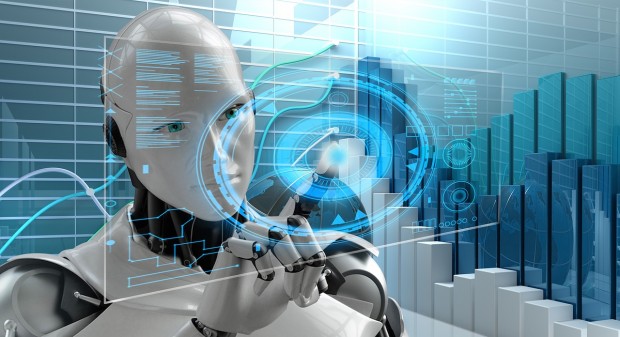Why Clinical Artificial Intelligence Is the Future of Diagnosis
The COVID-19 pandemic has popularized concepts that were once reserved for health professionals. Twitter in particular is teeming with budding epidemiologists and data scientists, liberally debating concepts such as Artificial Intelligence (AI) in the context of healthcare and disease modeling.
COVID-19: A Catalyst for AI
Of all terms relating to the Internet of Things (IoT), the expanding ecosystem of interrelated and connected computing devices, AI was the most mentioned on Twitter in the first quarter of 2020. AI has advanced and proven capabilities in healthcare, offering a wide range of use cases from digital patient access to care delivery and management. A concept that was once considered science fiction, has now become a springboard for wider adoption of digital health.
It's Time to Talk About Conversational AI
Conversational AI, whereupon companies utilize AI-powered conversational interfaces to enrich the customer experience, is developing at a rapid pace, acquiring greater levels of nuance, and contextual awareness while sporting a market share that is expected to grow from $5.8 billion in 2019 to $13.8 billion in 2023.
Conversational AI has already proven itself clinically viable, with New York's Montefiore Health System joining forces with conversational AI platform Hyro to deploy a cutting-edge COVID-19 Virtual Assistant within 48 hours. To date, the virtual assistant has logged tens of thousands of patient conversations, answering queries, performing risk assessment and directing patients to their requested information or service with both text and voice. New York has been one of the worst-affected states in the country, with over 350,000 confirmed cases of COVID-19 and over 27,000 deaths at the time of writing. Amid the mass panic triggered by such figures, Montefiore understood that a sophisticated AI-driven tool was necessary to meet urgent patient needs and ease the pressure on the healthcare professionals and contact centers.
Incidentally, Seattle's Providence St. Joseph Health came to a similar realization and built a comparable online screening and triage tool to handle tens of thousands of inquiries, working with Microsoft, digital prescribing platform Xealth, and the automation startup Twistle.
From Diagnostics to Disinfection Robots
Staying in the clinical setting, an AI-based chest X-ray system has been used to identify certain characteristics unique to COVID-19. The diagnostic software dXR was created by Mumbai-based startup Qure.ai as a radiology audit tool, but has been used by Bolton NHS Foundation Trust to monitor the extent of the viral infection. As well as being able to identify probable COVID-19 cases, dXR can quantify the percentage of lung affected.
Diagnosis is just one area where AI has come to the fore. UV Disinfection Robots are also gaining greater attention: these bacteria-killing autonomous machines use ultraviolet light to disinfect surface areas and prevent the spread of infectious diseases, making them almost purpose-built for our current moment (bonus: they're immune to infection). In South Korea, one hospital is deploying such robots to sterilize negative pressure rooms while using others to transport items to a disposal site and conduct temperature checks.
So-called interactive elder-bots, meanwhile, could prove valuable during a time when the elderly population is self-isolating; particularly since they may be advised to avoid all human contact until a vaccine is made available.
AI is being deployed outside the hospital too: in China, police wear temperature-screening helmets to identify possible virus carriers. The so-called smart helmets were developed by Shenzhen-based Kuang-Chi Technology, and feature real-time heat maps and waveguide displays that can simultaneously screen multiple people at once. The Italian government has already purchased several of the N901 helmets for use at Rome's Fiumicino Airport, and a similar technology is behind iThermo, a smartphone fitted with thermal and 3D laser cameras currently being trialed in Singapore. Amazingly, iThermo can screen up to 5,000 people per day - and here lies the attraction of AI-powered tools in the age of coronavirus.
Conversational AI interfaces, wearable thermal headsets, autonomous robot cleaners and diagnostic tools: innovative tech is demonstrating its utility when it's needed most. Expect governments to increasingly leverage AI-driven solutions in healthcare as in other areas of life as such technology becomes part of "the new normal."
See Now: NASA's Juno Spacecraft's Rendezvous With Jupiter's Mammoth Cyclone
* This is a contributed article and this content does not necessarily represent the views of scienceworldreport.com





Join the Conversation